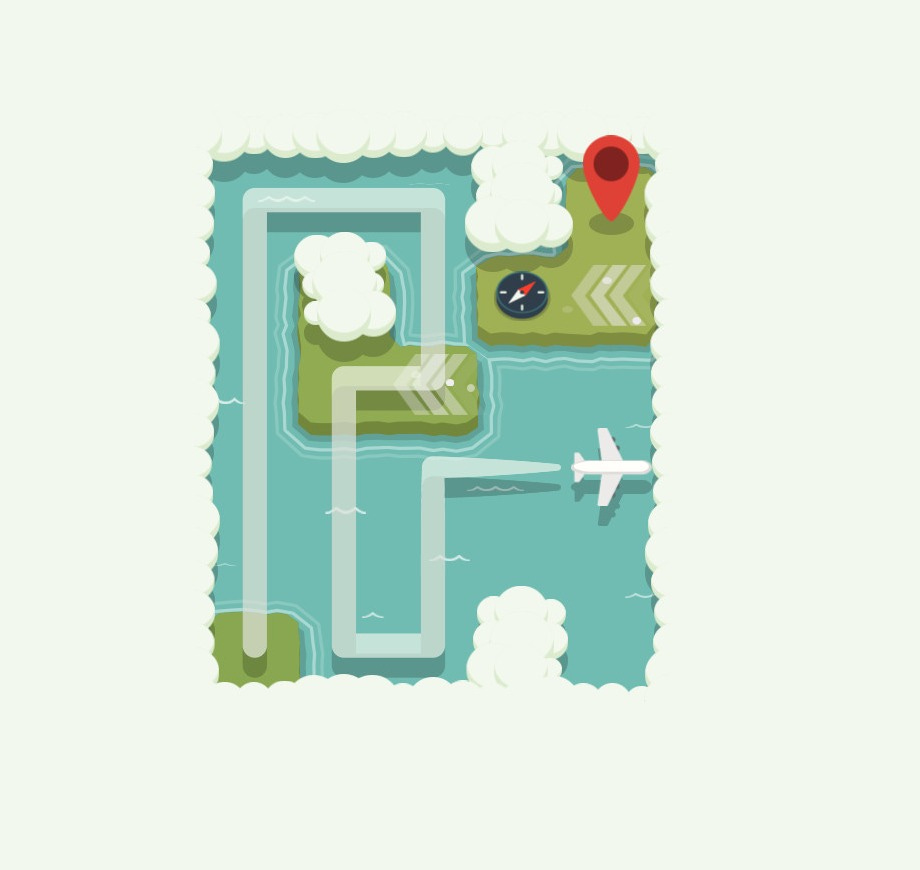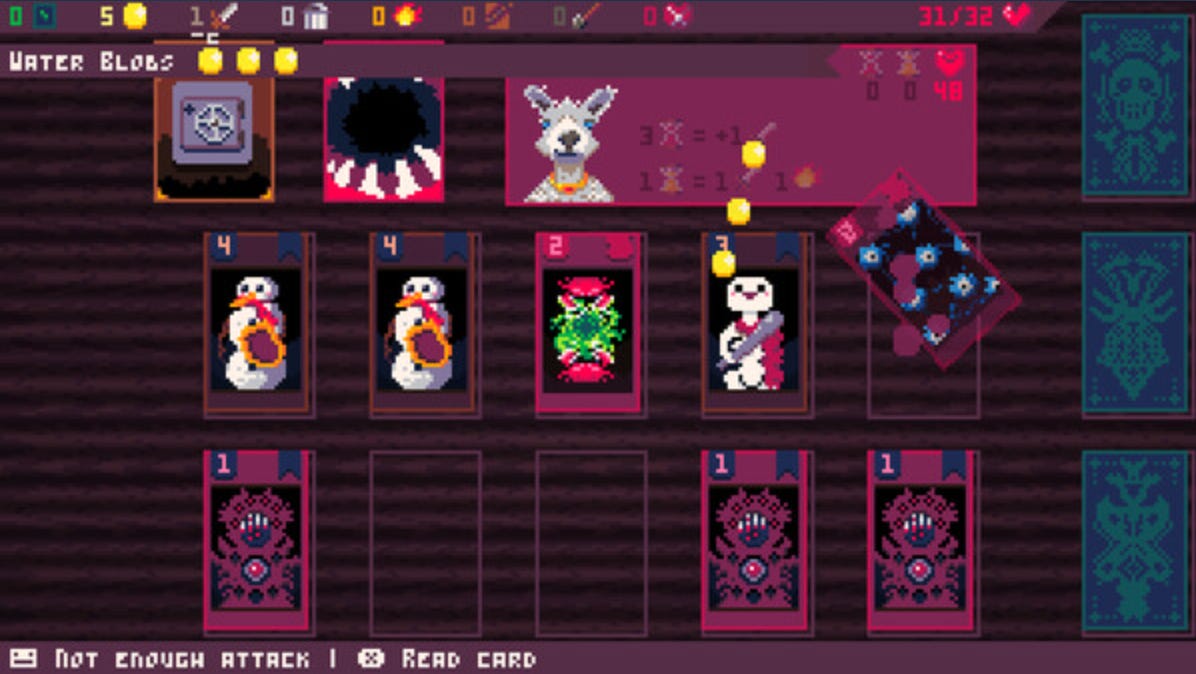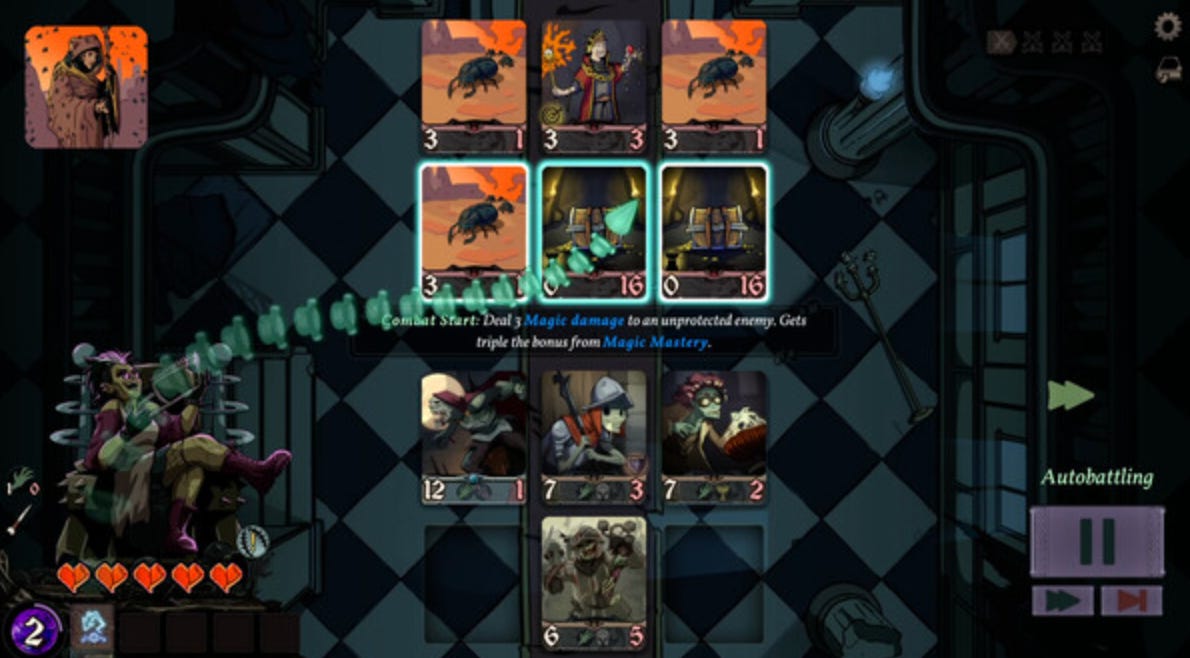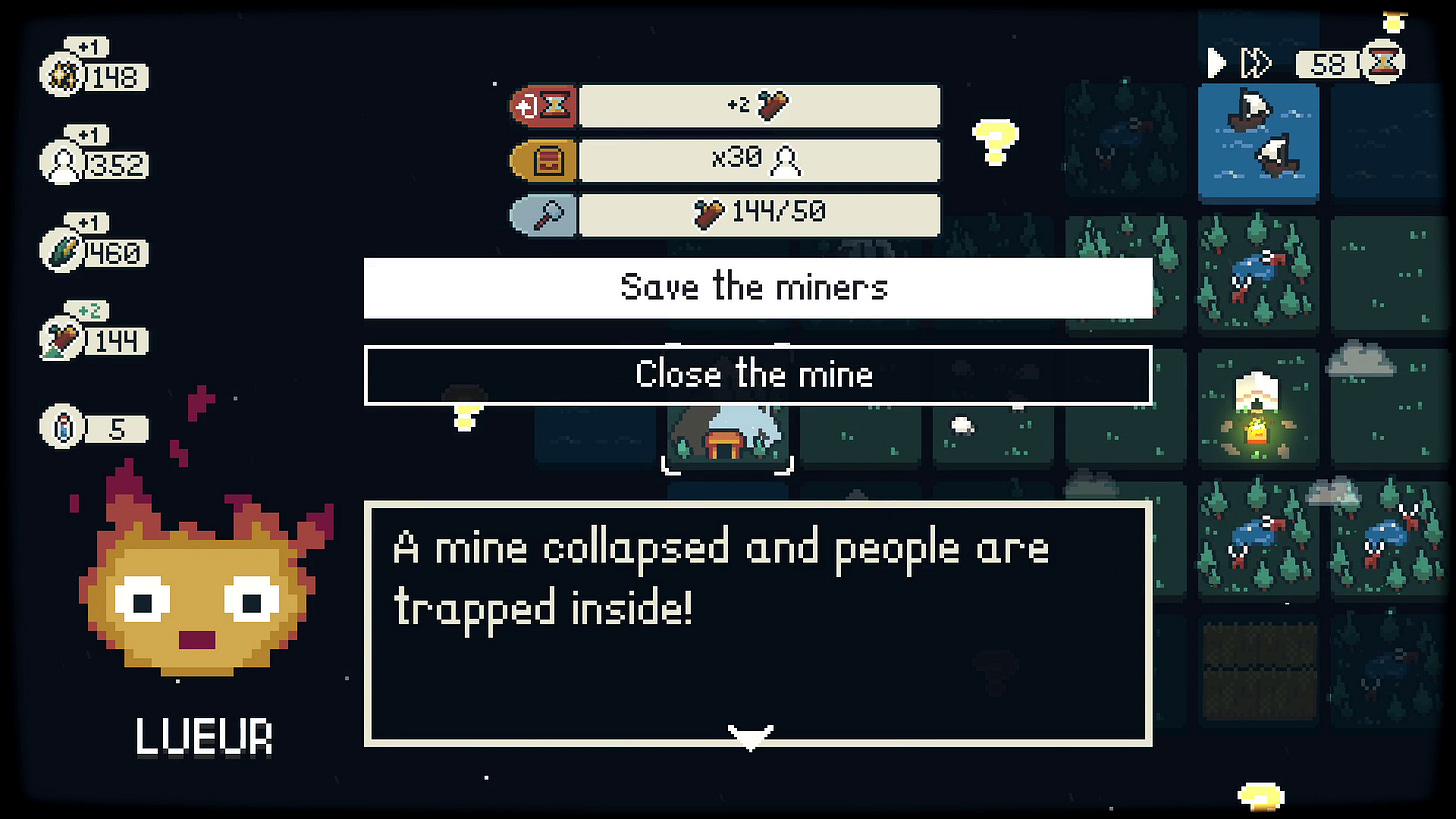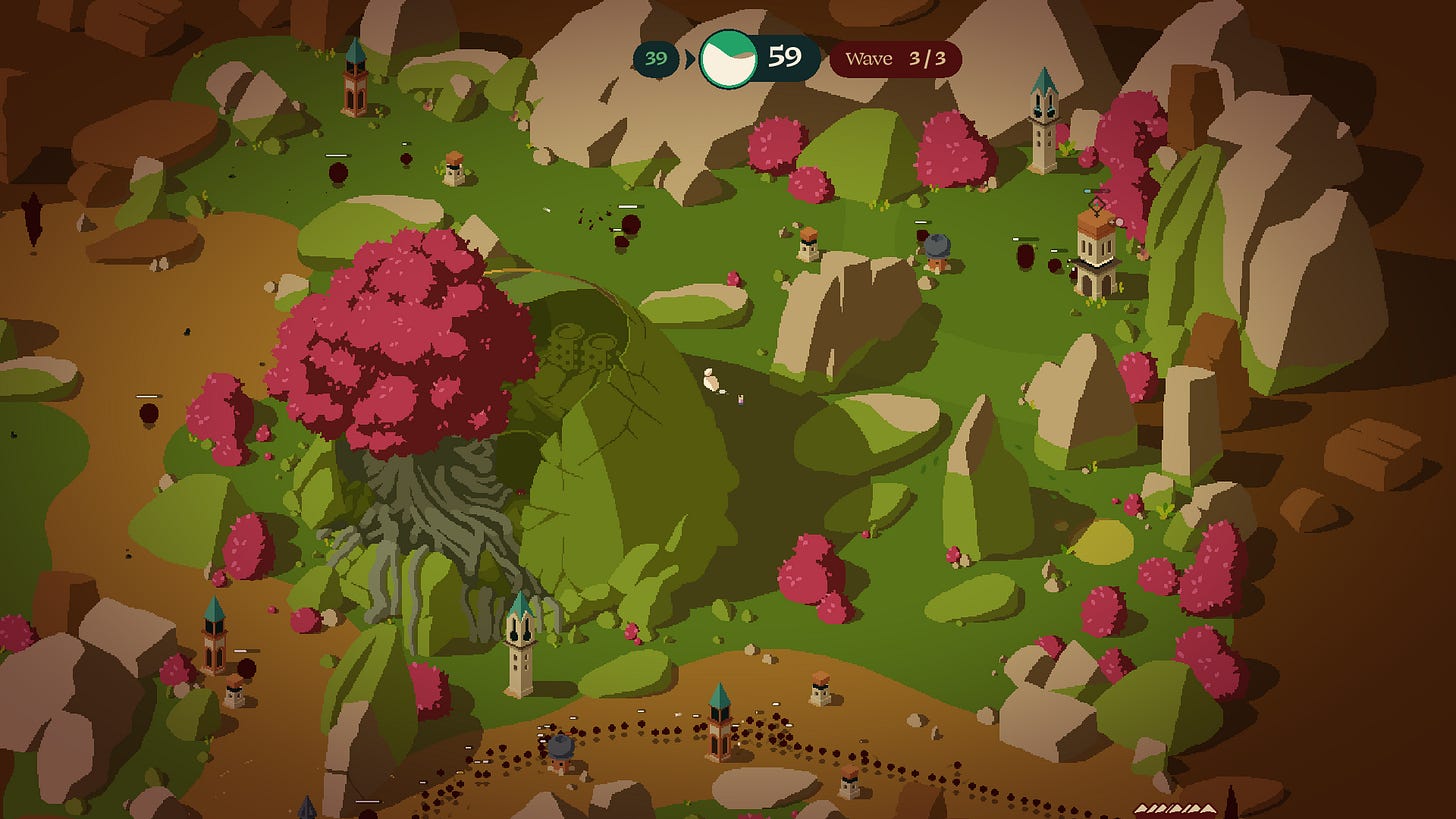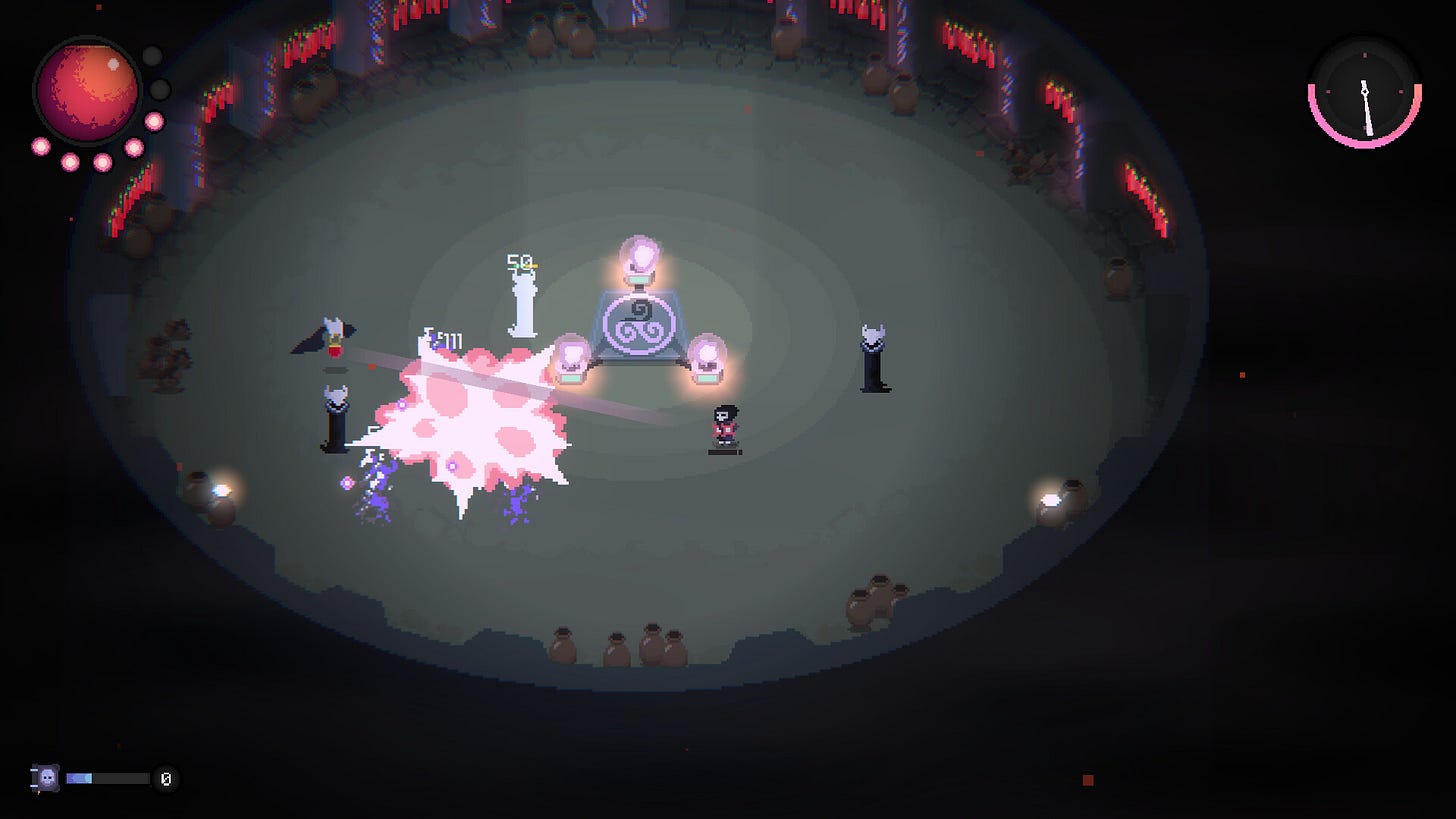Why Don't I play Sandbox games?
A quick excursion into the strange state of gaming, or as I like to call it: The Art is Better and the Discourse is Worse
Setting aside for a second the popularity of sandbox1 games and questions of artistic merit, I’m mostly just uninterested in games like Fortnite or Roblox, or even DnD. It’s not why I play.
This is heretical (and probably somewhat old fashioned) because these are far and away the most dominant forms of games on the market (both culturally and financially).
It’s old fashioned because it’s this view of art about communicating meaning from one person to the other. Now there are lots of different conversations about why games communicate meaning differently, but it’s possible for lots of games to communicate ideas, and that’s what I’m here for.
If games are about slicing off pieces of the mathematical universe and exploring them. Sandboxes are like slicing whole galaxies and then telling players to find their own pieces.
This can be interesting, in its own way, I suppose, but if I can be opinionated for a second, these experiences do very little to expand horizons or push players into interesting situations. It’s about doing things that you already want to do.2
Lots of games are either quasi-social experiences or quasi-gambling experiences. Habitual wrappers that pull players along without asking much. And it’s fair here to say that lots of players bring a lot to those games to make them more interesting.3
What’s interesting to me is the alchemy between that math and the player. Seeing what’s possible, what’s likely, and turning over an idea into its iterations and variations until you can see the depths of what it can communicate. If I’m playing the game I want it to be a ruleset that’s worthy of exploration, that has a POV and that I ant to figure out and understand.
The Judgementalness of It All
It’s probably hard to not read those words without some implicit judgement or understanding. Why can’t you just let people enjoy their games? Or some implication of “things would be better if only people put in a bit more effort”. The argument always seems to be this is a demand problem. But, it also seems like a supply problem, just like the fact that processed food is twice as cheap per calorie, freemium content is plentiful, pushed and ubiquitous. The platforms that make up our social experiences are so yawning and ubiquitous that escaping them can feel a bit like having to launch oneself like a rocket out of their gravitational pull.4
The processed food metaphor is apt here for me. It’s not that I believe these platforms are bad, it’s their centrality that I think is at the very least warping. cultural reality. I don’t every experience to be That Dragon Cancer, or Train. It’s that most experiences have gone the explicitly other direction, to be so shallow that they provide the barest amount of button clicking to propel the content forward without really engaging your brain.
Find One Game, Let it Be Rough Around the Edges
I’ve been bouncing around this idea about what it means to be well read (or well played5?) in an age such as ours, where small independent games are plentiful but the large games are all-encompassing. At times it can sound like I (and others) are suggesting a sort of pseudo-digital asceticism, forgoing popular games for indie gems. But that’s not my aim, and that’s not even what I do.
I think, however, if I had one piece of advice, it would to be to find a small game, a cheap game, that’s in a genre you enjoy and to just play it, regardless of its rough edges, regardless of if the design doesn’t wrap you up in a ball of warmth immediately and if there aren’t the cultural references you love and can note. And just let that game bounce around your head a bit.
I’ll leave you with a couple of very quick ones I’ve enjoyed recently:
Addendum
If you’re looking for a place to start, maybe check out CA Brown’s Youtube channel:
I’m defining a sandbox game here as a game where the “stuff” of the game is built around the art assets, the setting, and sometimes the story, but the mechanics of play (the way the players actually interact) are mostly held constant. There are few goals or structures and it’s up to the player(s) to decide what to do.
There are so many caveats to this that to do so would probably eliminate a lot of the thrust of the writing, so please feel free to sound off in the comments.
DMs who create interesting challenge for their players for example.
What’s specifically fascinating to me about this example is that by all accounts this set is well made by designers who care about the craft and design of the game, it is not a “cash grab” in the sense that it is poorly made. And yet… it can’t help but feel cash grab adjacent, like the design is almost ancillary to the value of the product. And that is… concerning.
Shout out to the accidental Bernie DeKoven reference.




